Lost but Not Forgotten: Identifying Unmapped and Unlisted Environmental Hazards including Abandoned Mines
Abstract
:1. Introduction
2. Materials and Methods
2.1. Study Regions
2.1.1. Sub-Region 1: Northern Coalfield (NC)
2.1.2. Sub-Region 2: Western Coalfield (WC)
2.1.3. Sub-Region 3: Southern Coalfield (SC)
2.2. Framework for Identifying Unlisted and Unmarked Mines
2.2.1. Step 1. Assemble Evidence
Search of Government Databases and Existing Inventories
Examination of Historical Publications from Local Industries
Investigation of Local Knowledge via Community Records and Personal Accounts
2.2.2. Step 2. Data Confirmation
2.2.3. Step 3. Establish Accurate Information Systems
3. Results
4. Discussion
5. Limitations
6. Conclusions
Author Contributions
Funding
Institutional Review Board Statement
Data Availability Statement
Acknowledgments
Conflicts of Interest
Appendix A
| Mine | Longitude | Latitude | Year Closed |
|---|---|---|---|
| Austinmer Extended | 150.93163 | −34.29657 | 1904 |
| Blackball | 150.89704 | −34.34471 | 1884 |
| Brokers Nose | 150.88073 | −34.36724 | 1947 |
| Bulli Main | 150.94851 | −34.2799 | 1967 |
| Dombarton | 150.79524 | −34.45335 | 1905 |
| Excelsior no 1. | 150.90854 | −34.30884 | 1914 |
| Excelsior no. 2 | 150.91283 | −34.30416 | 1857 |
| Hales | 150.89412 | −34.34201 | 1910 |
| Haywards Block | 150.82374 | −34.44429 | 1952 |
| Huntley | 150.72589 | −34.50089 | Unknown |
| Kemira | 150.85945 | −34.40804 | Unknown |
| Model | 150.89429 | −34.34045 | 1909 |
| Mount Kembla | 150.82477 | −34.41852 | 1861 |
| Mt Pleasant 1 | 150.86168 | −34.39883 | 1886 |
| Mt Pleasant 2 | 150.86391 | −34.38339 | Unknown |
| North Illawarra No. 2 and 3 | 150.92657 | −34.30203 | Unknown |
| Owens Balgownie | 150.86357 | −34.38467 | Unknown |
| Port Kembla No. 2/Nebo | 150.82099 | −34.4474 | 1975 |
| South Bellambi | 150.88485 | −34.36185 | 1912 |
| South Clifton | 150.96402 | −34.2634 | Unknown |
| South Kembla/Wongawilli | 150.78563 | −34.46269 | 1967 |
| Tom Thumb | 150.83473 | −34.40804 | 1904 |
| Mine | Longitude | Latitude | Year Closed |
|---|---|---|---|
| Hebburn No 1 Colliery | 151.45572 | −32.82045 | 1958 |
| Pelaw Main | 151.47537 | −32.82758 | 1955 |
| Hebburn No 2 Colliery | 151.43661 | −32.85136 | 1972 |
| Aberdare Main | 151.37871 | −32.84811 | 1961 |
| Aberdare South | 151.40081 | −32.88881 | 1927 |
| Ayrfield No 1 Colliery | 151.50986 | −32.78526 | 1933 |
| Ayrfield No 2 Colliery | 151.51036 | −32.78808 | 1928 |
| Ayrfield No 3 Colliery | 151.34948 | −32.67392 | Unknown |
| Bellbird Colliery | 151.32291 | −32.85902 | 1976 |
| Abermain No 2 Colliery | 151.40191 | −32.86083 | 1964 |
| Abermain No 3 Colliery | 151.41408 | −32.84003 | 1960 |
| Cessnock No 1 Colliery | 151.32705 | −32.90522 | 1964 |
| Cessnock No 2 Colliery | 151.33973 | −32.84873 | 1955 |
| East Greta No 1 Colliery | 151.52305 | −32.76086 | 1929 |
| East Greta No 2 Colliery | 151.52318 | −32.75725 | 1929 |
| Elrington Colliery | 151.41887 | −32.87571 | 1962 |
| Glen Ayr Colliery | 151.51086 | −32.778 | 1930 |
| Greta Colliery | 151.38516 | −32.67736 | 1931 |
| Hebburn No 2 Tunnel | 151.43629 | −32.82601 | 1908 |
| Maitland Main Colliery | 151.27915 | −32.88517 | 1972 |
| Millfield Greta Colliery | 151.27537 | −32.88538 | 1955 |
| Neath Colliery | 151.40925 | −32.82066 | 1961 |
| Stanford Main No 2 Colliery | 151.27907 | −32.90418 | 1961 |
| Richmond Vale Main Colliery | 151.47468 | −32.86023 | 1967 |
| Seaham No 2 Colliery | 151.55334 | −32.91308 | 1945 |
| Seaham Colliery | 151.58216 | −32.89169 | 1932 |
| Killingworth Colliery | 151.54505 | −32.93312 | Unknown |
| West Wallsend | 151.58172 | −32.89896 | Unknown |
| John Darling | 151.6743 | −33.0251 | Unknown |
| Burwood | 151.705 | −33.014 | 1982 |
| Dudley | 151.7188 | −32.9914 | 1944 |
| Lambton Colliery | 151.711 | −33.0081 | 1936 |
| Mine | Longitude | Latitude | Year Closed |
|---|---|---|---|
| Cal Colliery | 150.0804 | −33.3745 | Unknown |
| Commonwealth Colliery | 150.078 | −33.38 | Unknown |
| Wallerawang Colliery | 150.0575 | −33.3643 | Unknown |
| Irondale Colliery | 150.0119 | −33.3772 | Unknown |
| State Coal Mine | 150.168477 | −33.46306 | Unknown |
| Lithgow Valley Colliery | 150.155398 | −33.48591 | Unknown |
| Eskbank Colliery | 150.1618 | −33.48129 | Unknown |
References
- Goldewijk, K.K. Estimating global land use change over the past 300 years: The HYDE Database. Glob. Biogeochem. Cycles 2001, 15, 417–433. [Google Scholar] [CrossRef]
- Kattge, J.; Díaz, S.; Lavorel, S.; Prentice, I.C.; Leadley, P.; Bönisch, G.; Garnier, E.; Westoby, M.; Reich, P.; Wright, S.J.; et al. TRY—A global database of plant traits. Glob. Chang. Biol. 2011, 17, 2905–2935. [Google Scholar] [CrossRef]
- Walther, G.-R. Community and ecosystem responses to recent climate change. Philos. Trans. R. Soc. B Biol. Sci. 2010, 365, 2019–2024. [Google Scholar] [CrossRef] [PubMed]
- Walther, G.-R.; Post, E.; Convey, P.; Menzel, A.; Parmesan, C.; Beebee, T.J.C.; Fromentin, J.-M.; Hoegh-Guldberg, O.; Bairlein, F. Ecological responses to recent climate change. Nature 2002, 416, 389–395. [Google Scholar] [CrossRef]
- Jones, K.; Patel, N.; Levy, M.; Storeygard, A.; Balk, D.; Gittleman, J.L.; Daszak, P. Global trends in emerging infectious diseases. Nat. Cell Biol. 2008, 451, 990–993. [Google Scholar] [CrossRef] [PubMed]
- Chen, I.-C.; Hill, J.K.; Ohlemuller, R.; Roy, D.; Thomas, C.D. Rapid Range Shifts of Species Associated with High Levels of Climate Warming. Science 2011, 333, 1024–1026. [Google Scholar] [CrossRef] [PubMed]
- Thomas, C.D.; Cameron, A.; Green, R.E.; Bakkenes, M.; Beaumont, L.J.; Collingham, Y.C.; Erasmus, B.; de Siqueira, M.F.; Grainger, A.; Hannah, L.; et al. Extinction risk from climate change. Nature 2004, 427, 145–148. [Google Scholar] [CrossRef] [PubMed]
- Dutta, R.; Das, A.; Aryal, J. Big data integration shows Australian bush-fire frequency is increasing significantly. R. Soc. Open Sci. 2016, 3, 150241. [Google Scholar] [CrossRef] [PubMed] [Green Version]
- Benard, M.F. Warmer winters reduce frog fecundity and shift breeding phenology, which consequently alters larval development and metamorphic timing. Glob. Chang. Biol. 2014, 21, 1058–1065. [Google Scholar] [CrossRef]
- Lamb, D.; Erskine, P.D.; Fletcher, A. Widening gap between expectations and practice in Australian minesite rehabilitation. Ecol. Manag. Restor. 2015, 16, 186–195. [Google Scholar] [CrossRef]
- Peterson, C.H.; Rice, S.D.; Short, J.W.; Esler, D.; Bodkin, J.L.; Ballachey, B.E.; Irons, D.B. Long-Term Ecosystem Response to the Exxon Valdez Oil Spill. Science 2003, 302, 2082–2086. [Google Scholar] [CrossRef] [PubMed] [Green Version]
- Wright, I.A. Coal mine ‘dewatering’of saline wastewater into NSW streams and rivers: A growing headache for water pollution regulators. In Proceedings of the 6th Australian Stream Management Conference, Managing for Extremes, Canberra, ACT, Australia, 6–8 February 2012. [Google Scholar]
- Wright, I.A.; Belmer, N.; Davies, P. Coal Mine Water Pollution and Ecological Impairment of One of Australia’s Most ‘Protected’ High Conservation-Value Rivers. Water Air Soil Pollut. 2017, 228, 90. [Google Scholar] [CrossRef]
- Wright, I.A.; Paciuszkiewicz, K.; Belmer, N. Increased Water Pollution after Closure of Australia’s Longest Operating Underground Coal Mine: A 13-Month Study of Mine Drainage, Water Chemistry and River Ecology. Water Air Soil Pollut. 2018, 229, 55. [Google Scholar] [CrossRef]
- Alpers, C.N.; Yee, J.L.; Ackerman, J.; Orlando, J.L.; Slotton, D.G.; Marvin-DiPasquale, M.C. Prediction of fish and sediment mercury in streams using landscape variables and historical mining. Sci. Total Environ. 2016, 571, 364–379. [Google Scholar] [CrossRef]
- Armitage, P.D.; Bowes, M.J.; Vincent, H.M. Long-term changes in macroinvertebrate communities of a heavy metal polluted stream: The river Nent (Cumbria, UK) after 28 years. River Res. Appl. 2007, 23, 997–1015. [Google Scholar] [CrossRef]
- Bromstad, M.J.; Wrye, L.A.; Jamieson, H.E. The characterization, mobility, and persistence of roaster-derived arsenic in soils at Giant Mine, NWT. Appl. Geochem. 2017, 82, 102–118. [Google Scholar] [CrossRef]
- Cherry, D.; Currie, R.; Soucek, D.; Latimer, H.; Trent, G. An integrative assessment of a watershed impacted by abandoned mined land discharges. Environ. Pollut. 2000, 111, 377–388. [Google Scholar] [CrossRef]
- Fields, S. The earth's open wounds: Abandoned and orphaned mines. Environ. Health Perspect. 2003, 111, A154–A161. [Google Scholar] [CrossRef] [Green Version]
- Mayes, W.; Johnston, D.; Potter, H.; Jarvis, A. A national strategy for identification, prioritisation and management of pollution from abandoned non-coal mine sites in England and Wales. I.: Methodology development and initial results. Sci. Total Environ. 2009, 407, 5435–5447. [Google Scholar] [CrossRef]
- Azcue, J.M.; Nriagu, J.O. Impact of abandoned mine tailings on the arsenic concentrations in Moira Lake, Ontario. J. Geochem. Explor. 1995, 52, 81–89. [Google Scholar] [CrossRef]
- Thienpont, J.R.; Korosi, J.B.; Hargan, K.; Williams, T.; Eickmeyer, D.C.; Kimpe, L.E.; Palmer, M.J.; Smol, J.; Blais, J. Multi-trophic level response to extreme metal contamination from gold mining in a subarctic lake. Proc. R. Soc. B Boil. Sci. 2016, 283, 20161125. [Google Scholar] [CrossRef] [PubMed]
- EPA. Cleaning Up the Nation’s Waste Sites: Markets and Technology Trends; United States Environmental Protection Agency: Washington, D.C., USA, 2004.
- OSMRE. Abandoned Mine Land Inventory System. 2019. Available online: https://www.osmre.gov/programs/amlis.shtm (accessed on 1 November 2019).
- TCA. The Coal Authority-Interactive Map. 2019. Available online: https://mapapps2.bgs.ac.uk/coalauthority/home.html (accessed on 1 December 2019).
- USGS. Mineral Resources Data System (MRDS). 2011. Available online: https://mrdata.usgs.gov/mrds/ (accessed on 18 December 2019).
- Johnston, D.; Potter, H.; Jones, C.; Rolley, S.; Watson, I.; Pritchard, J. Abandoned Mines and the Water Environment in the UK. In Sercuring the Future and 8th International Conference on Acid Rock Drainage (ICARD); International Network for Acid Prevention: Skellefteå, Sweden, 26 June.
- Jarvis, A.P.; Johnston, D.; Mayes, W.M.; Potter, H.A.B. Application of a New methodology for Assessing the Priorities for Abandoned Mine Water Pollution Remediation at a National Scale: Results and Implications from a Study across England and Wales. In Proceedings of the 10th International Mine Water Association Congress: Mine Water and the Environment, Ostrava, Czech Republic, 2–5 June 2008; Rapantova, N., Hrkal, Z., Eds.; VSB-Tech. Univ. Ostrava: Ostrava, Czech Republic, 2008. [Google Scholar]
- NOAMI. 2018. Available online: https://www.abandoned-mines.org/en/ (accessed on 1 October 2019).
- Unger, C.; Lechner, A.M.; Glenn, V.; Edraki, M.; Mulligan, D.R.; Mapping and prioritising rehabilitation of abandoned mines in Australia. Proc. Life—Mine conference; Brisbane, Australia; pp. 259–266. Available online: https://www.researchgate.net/profile/Corinne-Unger/publication/233824122_Mapping_impacts_and_prioritising_rehabilitation_of_Abandoned_Mines_at_a_national_level_in_Australia/links/547d02ea0cf2cfe203c1ffd6/Mapping-impacts-and-prioritising-rehabilitation-of-Abandoned-Mines-at-a-national-level-in-Australia.pdf (accessed on 1 October 2019).
- Grant, H. Managing Contaminated Sites: Environment Protection Authority, Department of Trade and Investment, Regional Infrastructure and Services; Audit Office of New South Wales: Sydney, NSW, Australia, 2014. [Google Scholar]
- Auditor-General, NSW. New South Wales Auditor-General’s Report Performance Audit—Managing Contaminated Sites; Audit Office of New South Wales: Sydney, NSW, Australia, 2011.
- GA. Australian Mines Atlas. Geoscience Australia. 2017. Available online: http://www.australianminesatlas.gov.au/ (accessed on 1 September 2019).
- John, D. History of the Greta Coal Measures. Available online: http://pandora.nla.gov.au/pan/100781/20090610-1630/hosting.collectionsaustralia.net/newcastle/greta/frames.html (accessed on 20 September 2019).
- Jenny, R. Cessnock Local Government Area Economic Development Strategy; Cessnock City Council: Cessnock, NSW, Australia, 2014. [Google Scholar]
- NPWS. Illawarra Escarpment State Conservation Area—Draft Plan of Management; Natioanal Parks and Wildlife Service NSW: Illawarra, NSW, Australia, 2011. [Google Scholar]
- Werner, T.T.; Mudd, G.M.; Schipper, A.M.; Huijbregts, M.A.; Taneja, L.; Northey, S.A. Global-scale remote sensing of mine areas and analysis of factors explaining their extent. Glob. Environ. Chang. 2019, 60, 102007. [Google Scholar] [CrossRef]
- NSW Government. 1979. Available online: http://www.legislation.nsw.gov.au/view/whole/html/inforce/current/act-1979-203 (accessed on 9 June 2019).
- Weng, Z.; Mudd, G.M.; Martin, T.; Boyle, C.A. Pollutant loads from coal mining in Australia: Discerning trends from the National Pollutant Inventory (NPI). Environ. Sci. Policy 2012, 19-20, 78–89. [Google Scholar] [CrossRef]
- Dang, Z.; Liu, C.; Haigh, M.J. Mobility of heavy metals associated with the natural weathering of coal mine spoils. Environ. Pollut. 2001, 118, 419–426. [Google Scholar] [CrossRef]
- Maddocks, G.; Lin, C.; McConchie, D. Field scale remediation of mine wastes at an abandoned gold mine, Australia II: Effects on plant growth and groundwater. Environ. Earth Sci. 2008, 57, 987–996. [Google Scholar] [CrossRef]
- Hu, Z.; Fu, Y.; Xiao, W.; Zhao, Y.; Wei, T. Ecological restoration plan for abandoned underground coal mine site in Eastern China. Int. J. Mining Reclam. Environ. 2014, 29, 316–330. [Google Scholar] [CrossRef]
- NPI. National Pollution Inventory. 2017. Available online: http://www.npi.gov.au/ (accessed on 30 January 2018).
- Dudka, S.; Adriano, D.C. Environmental Impacts of Metal Ore Mining and Processing: A Review. J. Environ. Qual. 1997, 26, 590–602. [Google Scholar] [CrossRef]
- Bhuiyan, M.A.; Parvez, L.; Islam, M.; Dampare, S.B.; Suzuki, S. Heavy metal pollution of coal mine-affected agricultural soils in the northern part of Bangladesh. J. Hazard. Mater. 2010, 173, 384–392. [Google Scholar] [CrossRef]
- Li, Z.; Ma, Z.; van der Kuijp, T.J.; Yuan, Z.; Huang, L. A review of soil heavy metal pollution from mines in China: Pollution and health risk assessment. Sci. Total Environ. 2014, 468-469, 843–853. [Google Scholar] [CrossRef]
- Schaider, L.A.; Senn, D.; Brabander, D.; McCarthy, K.D.; Shine, J.P. Characterization of Zinc, Lead, and Cadmium in Mine Waste: Implications for Transport, Exposure, and Bioavailability. Environ. Sci. Technol. 2007, 41, 4164–4171. [Google Scholar] [CrossRef]
- Bell, F.G.; Stacey, T.R.; Genske, D.D. Mining subsidence and its effect on the environment: Some differing examples. Environ. Earth Sci. 2000, 40, 135–152. [Google Scholar] [CrossRef]
- Mokhov, A.V. Mine water drainage from flooded coal mines. Dokl. Earth Sci. 2011, 438, 733–735. [Google Scholar] [CrossRef]
- Ali, A.; Strezov, V.; Davies, P.; Wright, I. Environmental impact of coal mining and coal seam gas production on surface water quality in the Sydney basin, Australia. Environ. Monit. Assess. 2017, 189, 408. [Google Scholar] [CrossRef] [PubMed]
- Ashcroft, M.B.; Chisholm, L.A.; French, K.O. The effect of exposure on landscape scale soil surface temperatures and species distribution models. Landsc. Ecol. 2007, 23, 211–225. [Google Scholar] [CrossRef] [Green Version]
- BOM. Monthly Rainfall Bellambi AWS. 2018. Available online: http://www.bom.gov.au/jsp/ncc/cdio/weatherData/av?p_nccObsCode=139&p_display_type=dataFile&p_startYear=&p_c=&p_stn_num=068228 (accessed on 20 June 2018).
- Price, P.; Wright, I.A. Water Quality Impact from the Discharge of Coal Mine Wastes to Receiving Streams: Comparison of Impacts from an Active Mine with a Closed Mine. Water Air Soil Pollut. 2016, 227, 155. [Google Scholar] [CrossRef]
- Belmer, N.; Tippler, C.; Davies, P.J.; Wright, I.A. Impact of a coal mine waste discharge on water quality and aquatic ecosystems in the Blue Mountains World Heritage Area. In Proceedings of the 7th Australian Stream Management Conference, Townsville, QLD, Australia, 27–30 July 2014. [Google Scholar]
- Wright, I.A.; Ryan, M.M. Impact of mining and industrial pollution on stream macroinvertebrates: Importance of taxonomic resolution, water geochemistry and EPT indices for impact detection. Hydrobiologia 2016, 772, 103–115. [Google Scholar] [CrossRef]
- ANZECC. Australian and New Zealand Guidelines for Fresh and Marine Water Quality; Australian and New Zealand Environment and Conservation Council and Agriculture and Resource Management Council of Australia and New Zealand: Canberra, ACT, Australia, 2000; pp. 1–103.
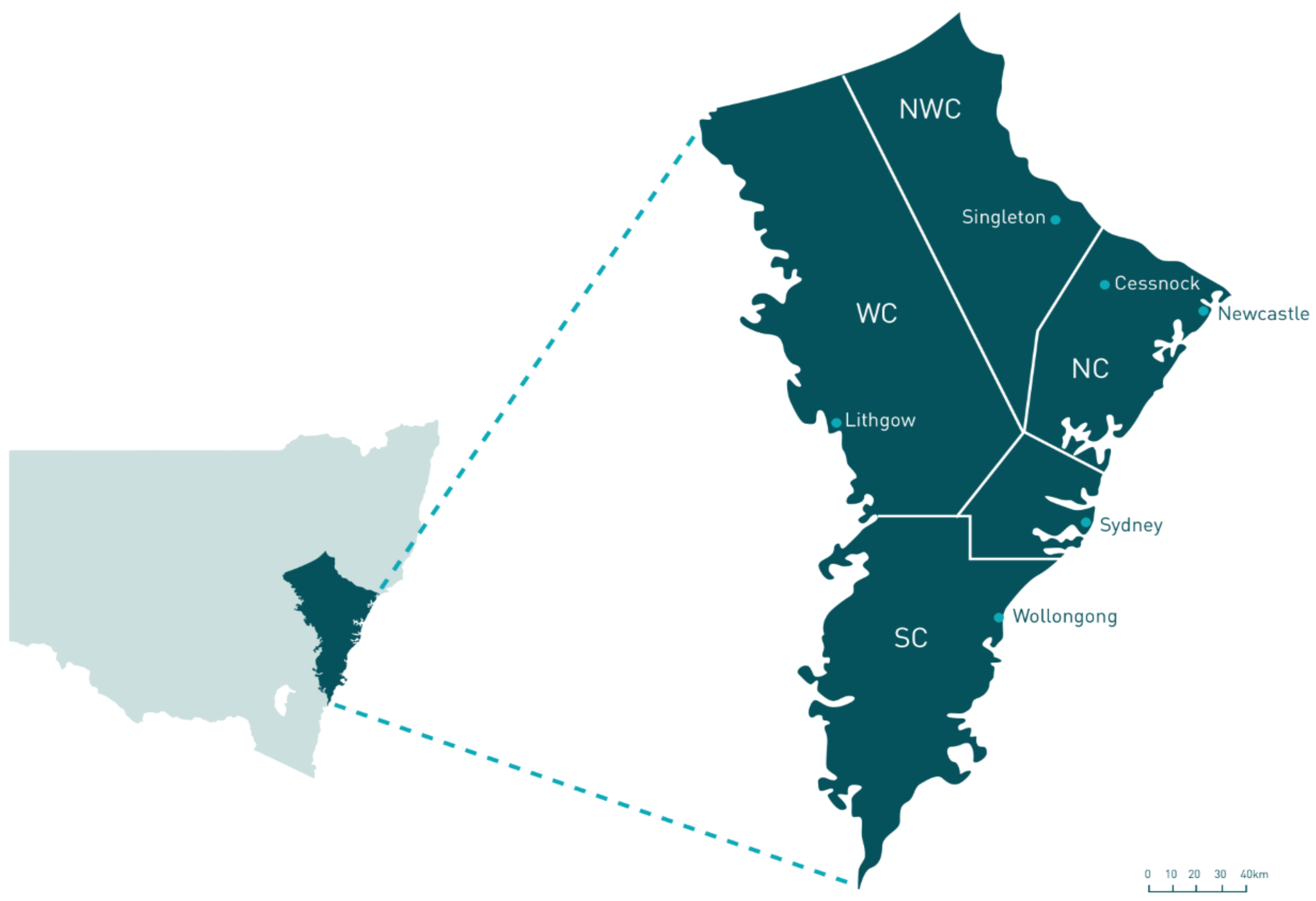
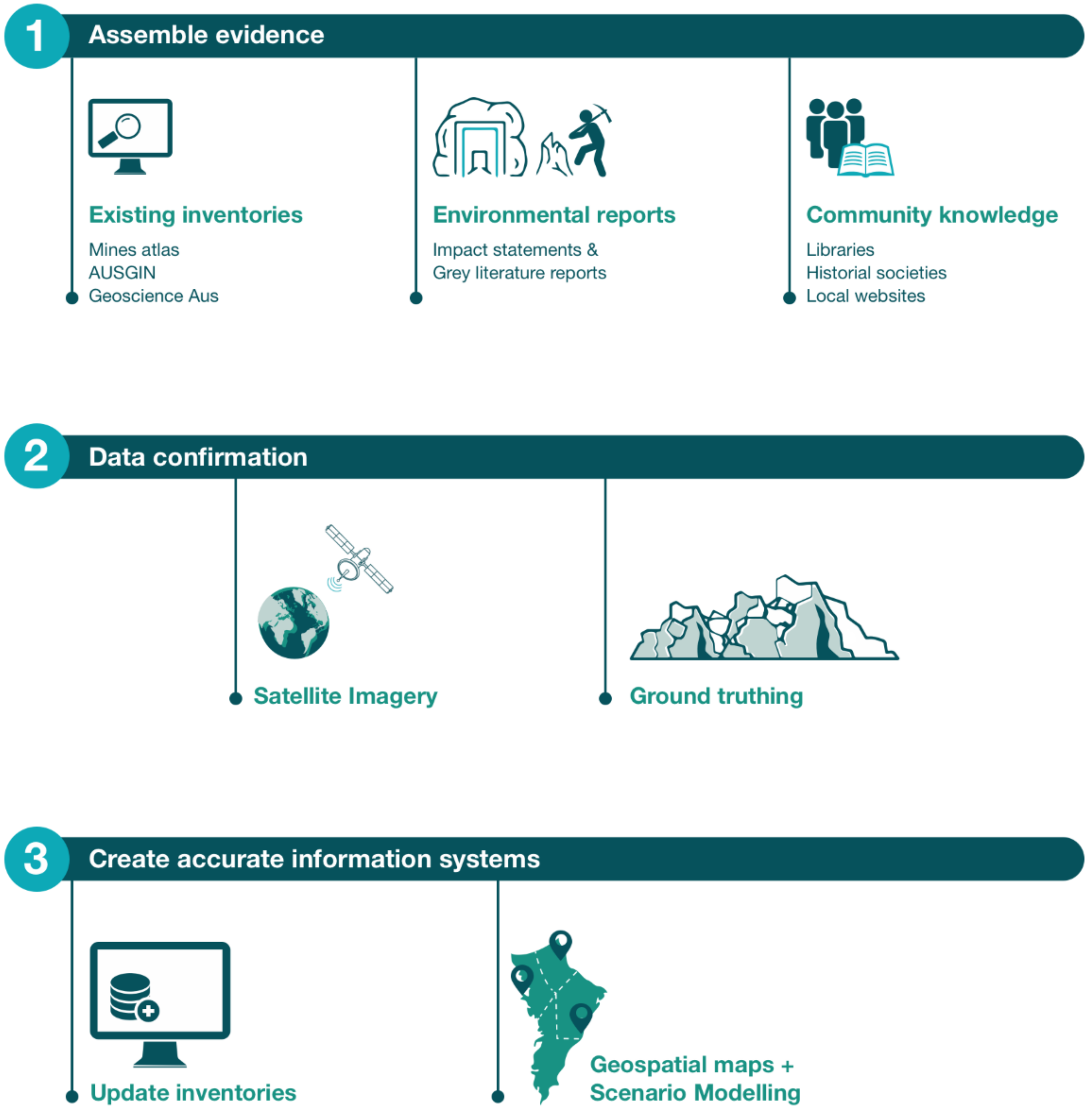

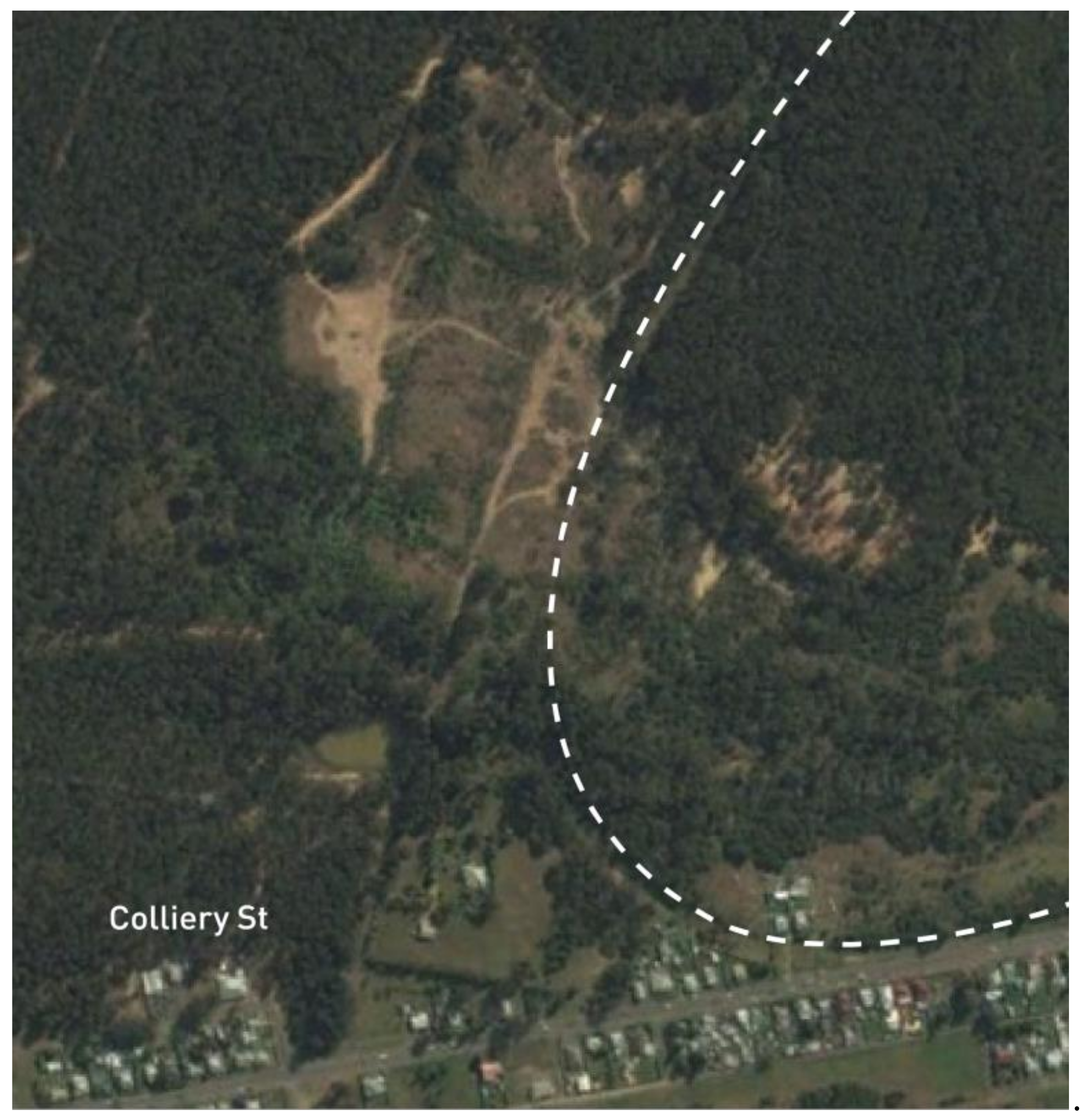
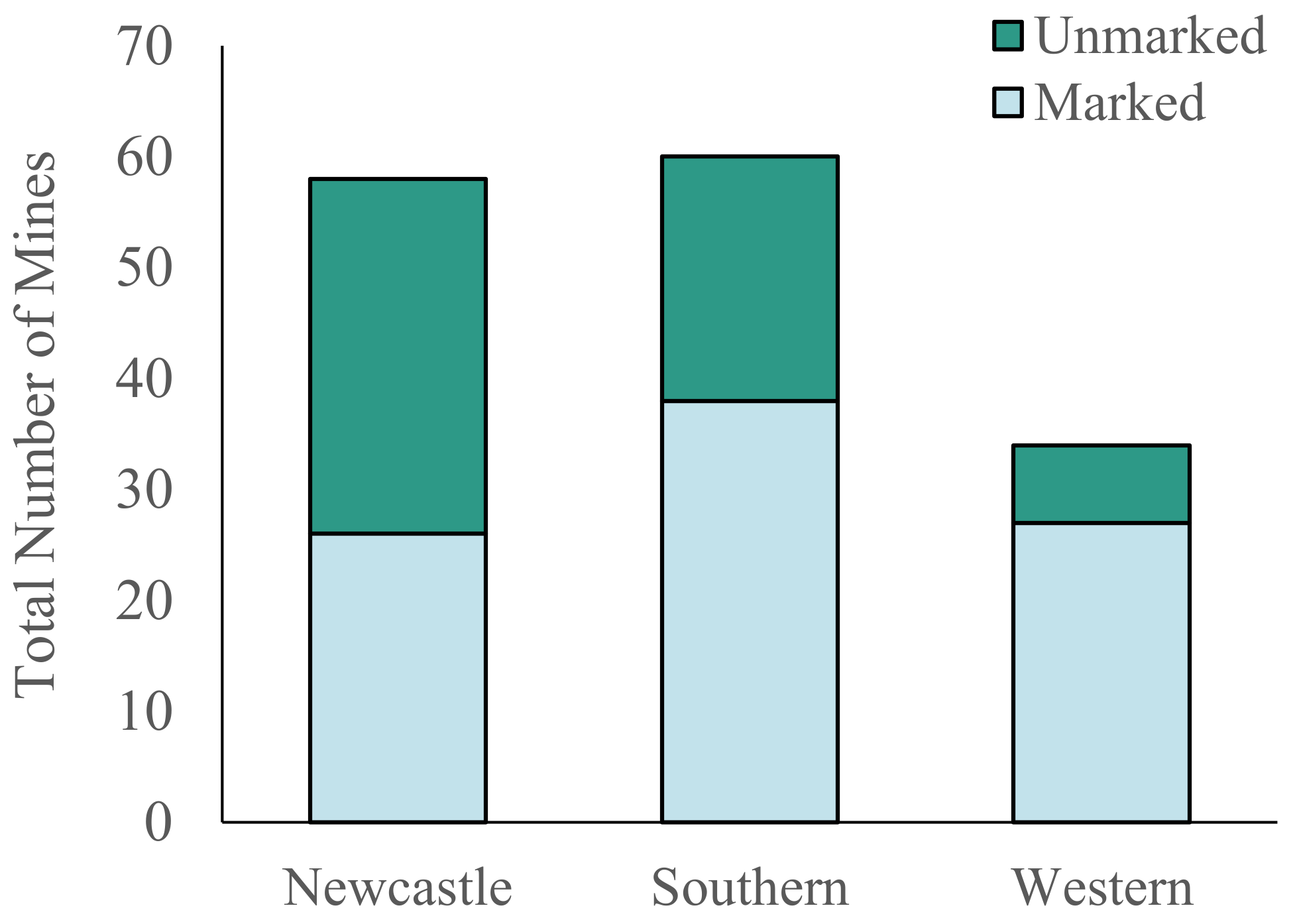
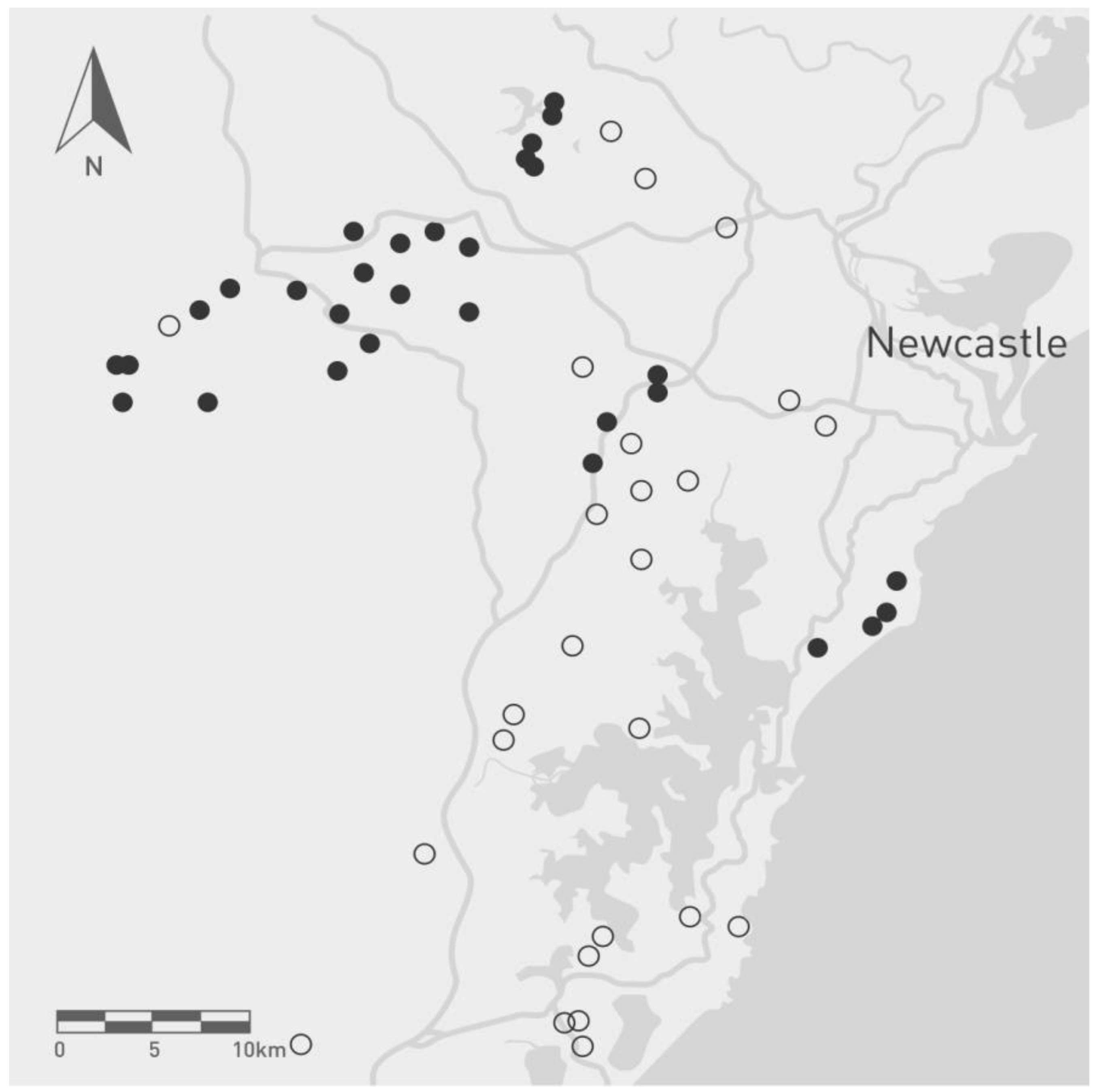
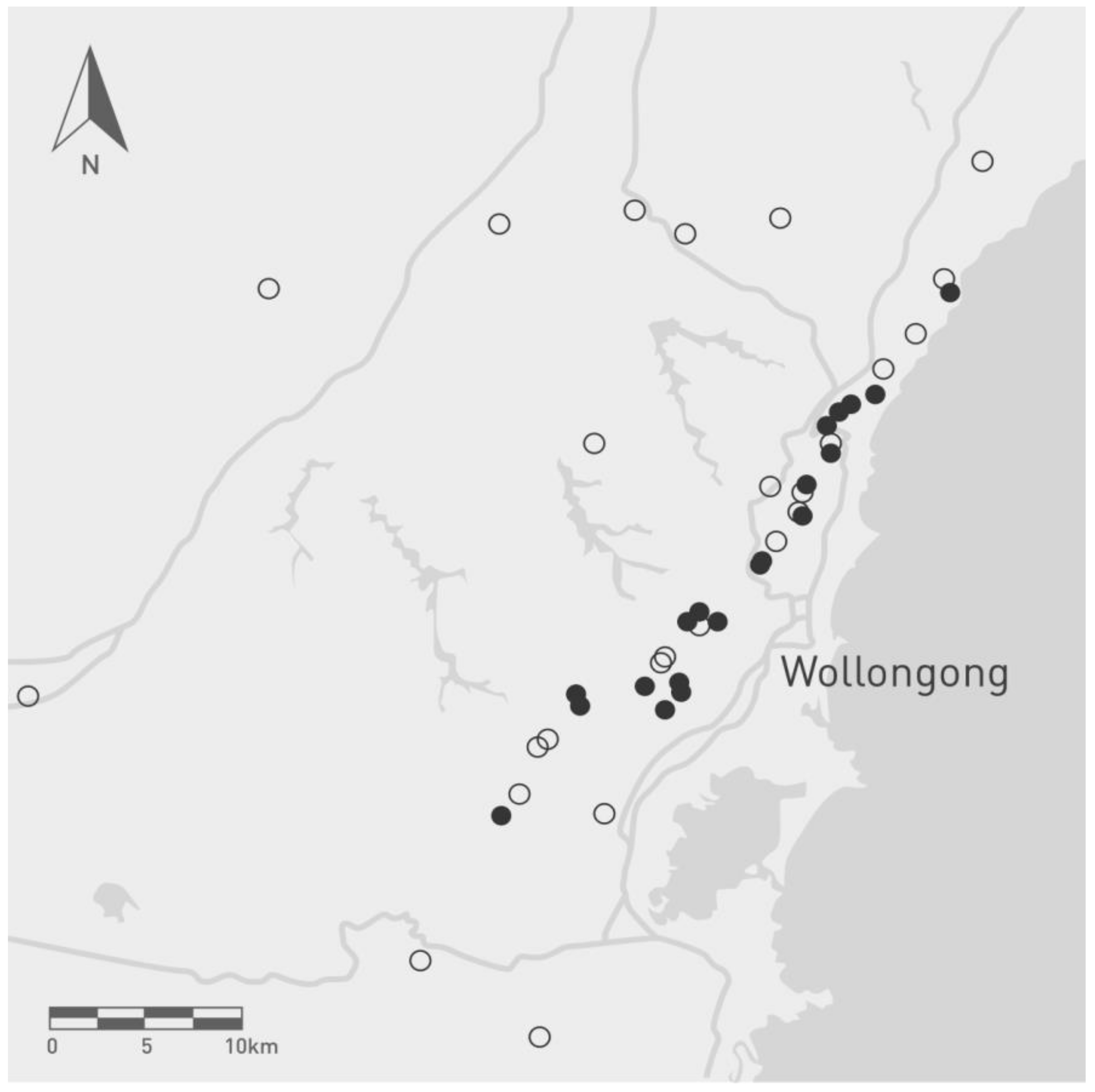
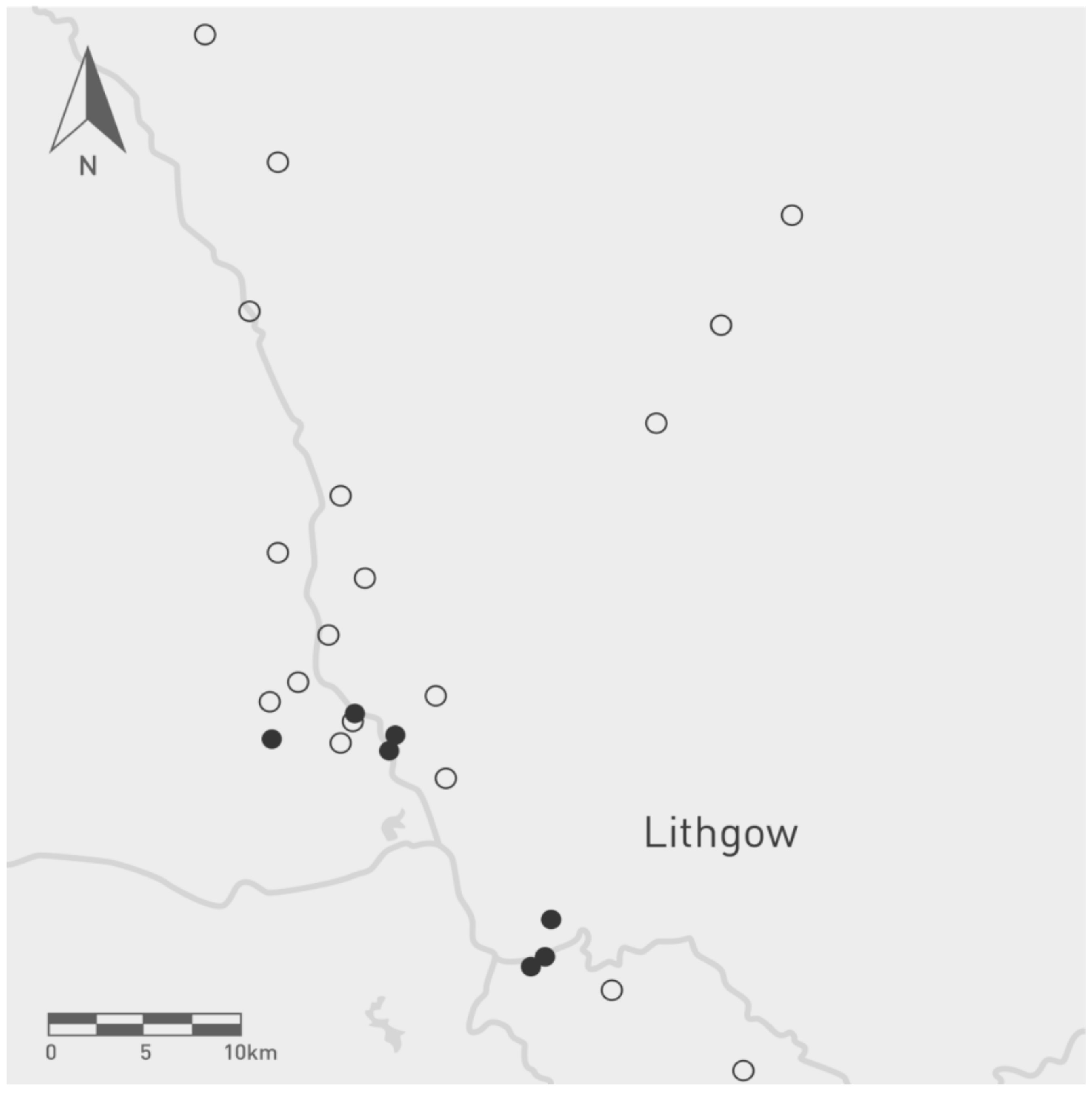
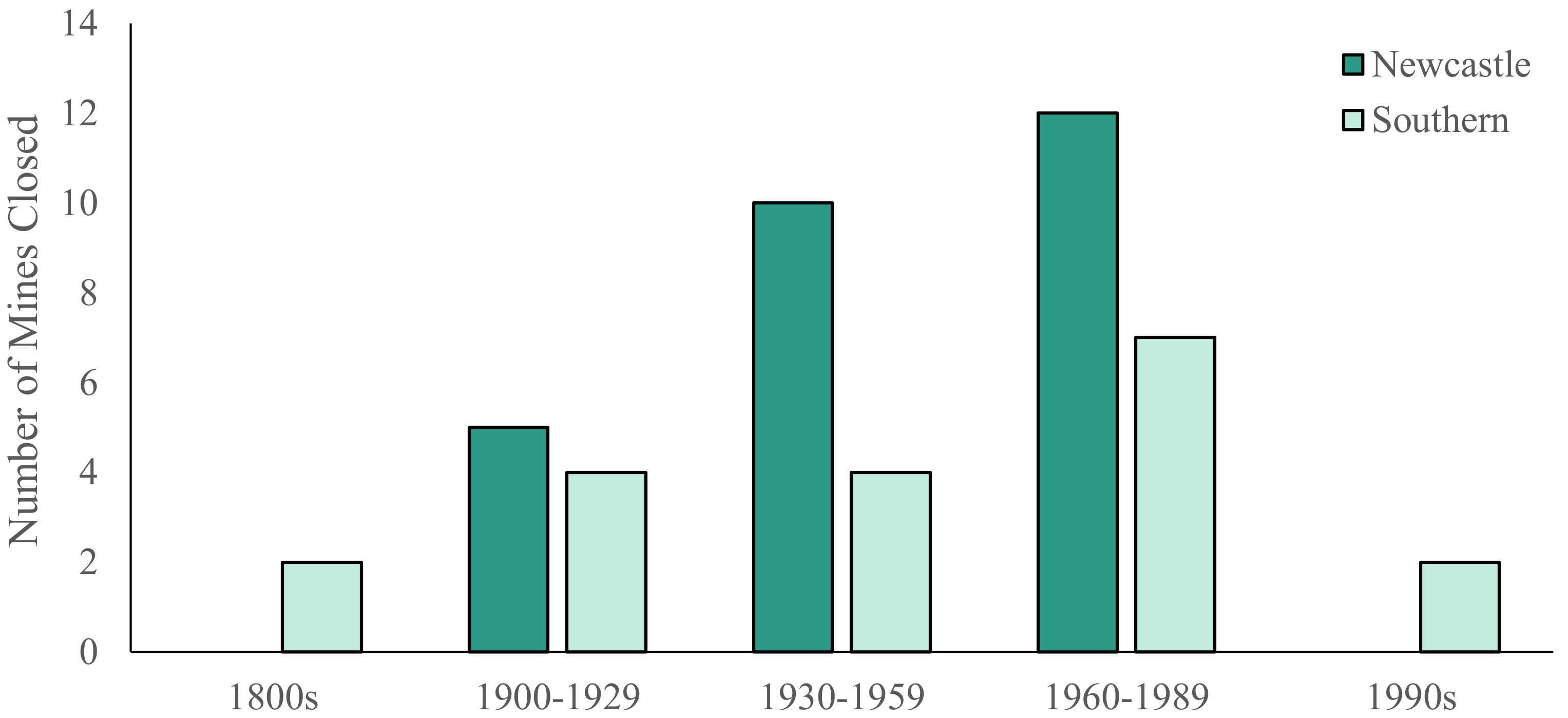
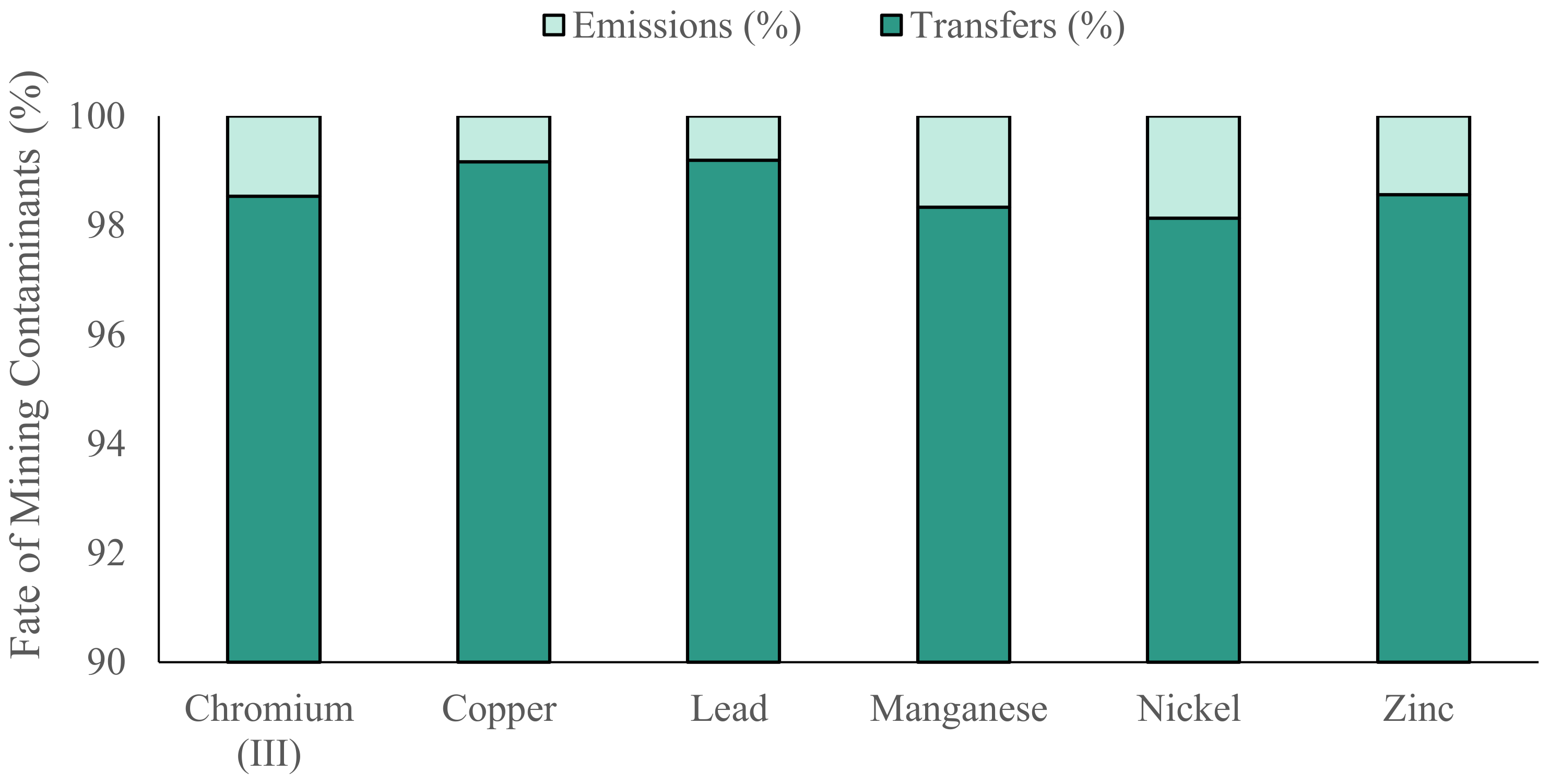
Publisher’s Note: MDPI stays neutral with regard to jurisdictional claims in published maps and institutional affiliations. |
© 2021 by the authors. Licensee MDPI, Basel, Switzerland. This article is an open access article distributed under the terms and conditions of the Creative Commons Attribution (CC BY) license (https://creativecommons.org/licenses/by/4.0/).
Share and Cite
Young, K.P.; Murray, B.R.; Martin, L.J.; Murray, M.L. Lost but Not Forgotten: Identifying Unmapped and Unlisted Environmental Hazards including Abandoned Mines. Sustainability 2021, 13, 11011. https://doi.org/10.3390/su131911011
Young KP, Murray BR, Martin LJ, Murray ML. Lost but Not Forgotten: Identifying Unmapped and Unlisted Environmental Hazards including Abandoned Mines. Sustainability. 2021; 13(19):11011. https://doi.org/10.3390/su131911011
Chicago/Turabian StyleYoung, Kieran P., Brad R. Murray, Leigh J. Martin, and Megan L. Murray. 2021. "Lost but Not Forgotten: Identifying Unmapped and Unlisted Environmental Hazards including Abandoned Mines" Sustainability 13, no. 19: 11011. https://doi.org/10.3390/su131911011
APA StyleYoung, K. P., Murray, B. R., Martin, L. J., & Murray, M. L. (2021). Lost but Not Forgotten: Identifying Unmapped and Unlisted Environmental Hazards including Abandoned Mines. Sustainability, 13(19), 11011. https://doi.org/10.3390/su131911011







